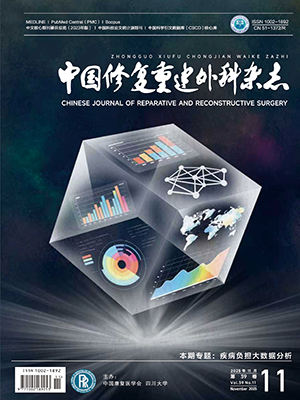OBJECTIVE: To explore the importance of the posterior and lateral arterial network of elbow in the application of the super-regional and mutual-pedicled axial flap. METHODS: Twenty-seven upper extremities of adult cadavers were prepared as casts of Acrylomintril Batradiene Styrene(ABS) resin and corroded in a b solution of NaOH according to natural layers of human tissue. The source, site and structure of the posterior and lateral arterial network of elbow were observed, the number and total sectional area of anastomosing branches crossing the line between two humeral epicondyles were measured and compared with the medial and anterior region. RESULTS: There are 8.64 +/- 2.74(36.42%) and 8.30 +/- 1.19(35.0%) anastomosing branches crossing the posterior and lateral regions, and total section areas are (0.48 +/- 0.11) mm2 and (0.37 +/- 0.03) mm2 respectively. So there is very rich arterial network around the elbow. CONCLUSION: The enough number of anastomosing branches and their section areas of the posterior and lateral region of the elbow make it possible to connect super-regional and mutual-pedicled axial flaps crossing the elbow.
Citation: WANG Wei bin,LIU Da lie,MENG Qing yan,.. IMPORTANCE OF THE POSTERIOR AND LATERAL ARTERIAL NETWORK OF ELBOW ON THE SUPER REGIONAL AND MUTUAL PEDICLED AXIAL FLAP. Chinese Journal of Reparative and Reconstructive Surgery, 2000, 14(4): 200-204. doi: Copy
Copyright © the editorial department of Chinese Journal of Reparative and Reconstructive Surgery of West China Medical Publisher. All rights reserved




